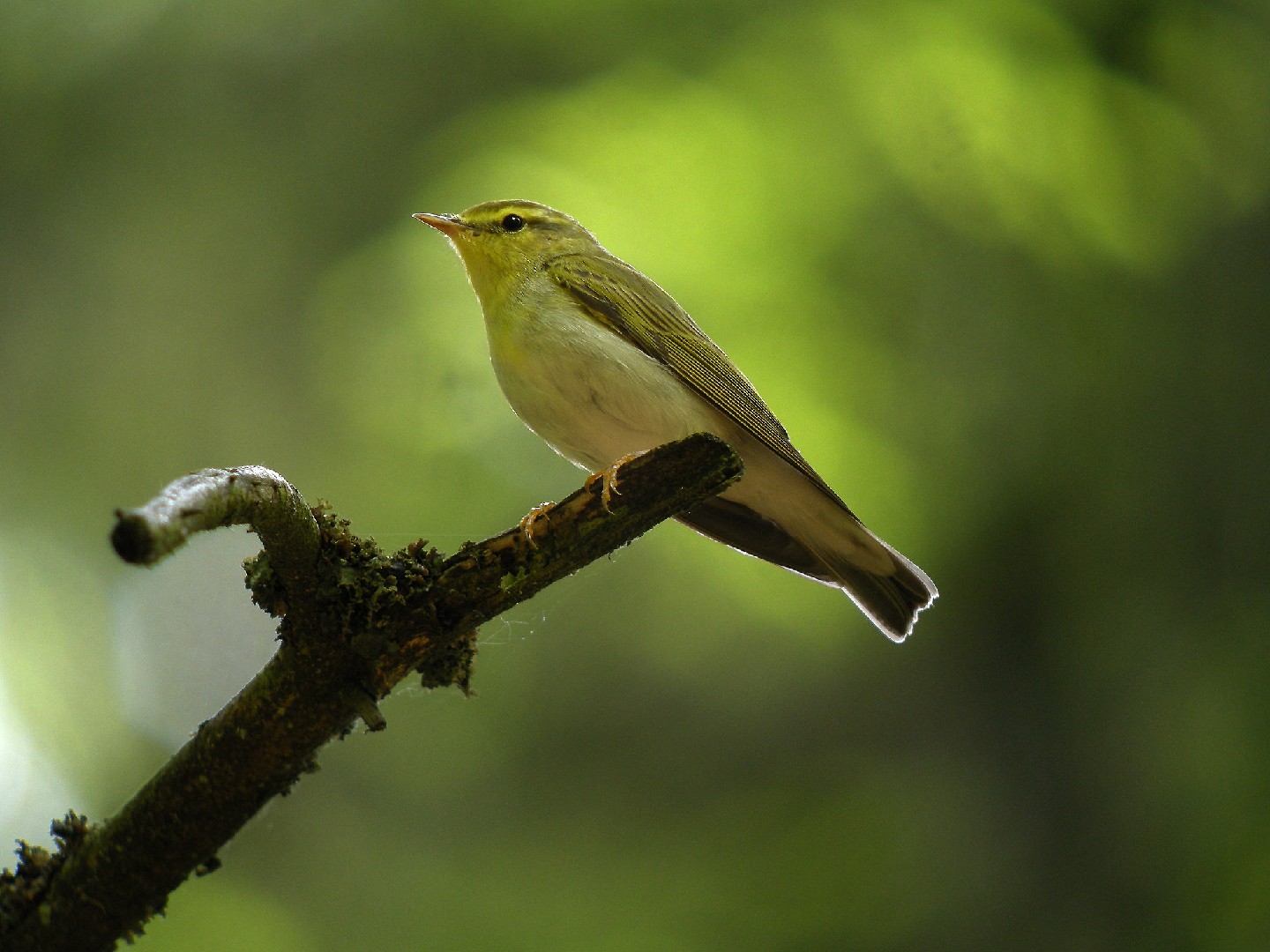Wood Warbler
A species of Chiffchaffs And Allies Scientific name : Phylloscopus sibilatrix Genus : Chiffchaffs And Allies
Wood Warbler, A species of Chiffchaffs And Allies
Botanical name: Phylloscopus sibilatrix
Genus: Chiffchaffs And Allies
Content
Description General Info
 Photo By Frank Vassen from Brussels, Belgium , used under CC-BY-2.0 /Cropped and compressed from original
Photo By Frank Vassen from Brussels, Belgium , used under CC-BY-2.0 /Cropped and compressed from original Description
The wood warbler is 11–12.5 cm long, and a typical leaf warbler in appearance, green above and white below with a lemon-yellow breast. It can be distinguished from similar species, like the chiffchaff P. collybita and the willow warbler, P. trochilus by its yellow supercilium, throat and upper breast, pale tertial edges, longer primary projection, and by its shorter but broader tail. It is a summer visitor to the United Kingdom, seen from April until August. It has declined there in recent years. It is rare in Ireland, where there is a very small but apparently stable breeding population in County Wicklow. Various factors associated with forest structure, including slope, forest cover, proportion of broad-leaf forest, canopy height and forest edge length, all influenced the occupancy rates of this declining forest species. Conservation measures are therefore required that provide and maintain the wood warblers preferred forest structure. There is also a preference for forest in the non-breeding season, however this habitat is declining in wintering areas such as Ghana. Despite the decline in forest habitats, there has been no change in number of wood warblers as it appears that this species can use degraded habitats, such as well-wooded farms. However, further loss of trees will likely have a negative impact on this species in the future. 
Size
12 cm
Life Expectancy
10.2 years
Nest Placement
Shrub
Feeding Habits
Primarily insectivorous, wood Warbler feeds on caterpillars and aphids, using a 'hover-gleaning' method to pluck prey from leaves and bark, showing a preference for foraging in the canopy.
Habitat
Wood Warbler inhabits a range of woodland environments, predominately favoring mature, shady broadleaf and mixed forests with moist conditions in temperate regions. Its preferred breeding grounds feature a closed canopy with minimal understory, interspersed with mixed-age beech, oak, and coniferous trees. In tropical Africa, wood Warbler dwells in humid evergreen forests and forested mountain slopes, adapting to scattered trees in clearings and wooded savannas during non-breeding seasons.
Dite type
Insectivorous
General Info
Feeding Habits
Bird food type
Bird Feeder Type

Small Tube Feeder

Platform
Sounds
Call
Recording location: Belgium
Song
Recording location: Belgium
Song
Recording location: Belgium

 Photo By Frank Vassen from Brussels, Belgium , used under CC-BY-2.0 /Cropped and compressed from original
Photo By Frank Vassen from Brussels, Belgium , used under CC-BY-2.0 /Cropped and compressed from original Scientific Classification
Phylum
Chordates Class
Birds Order
Perching birds Family
Phylloscopidae Genus
Chiffchaffs And Allies Species
Wood Warbler